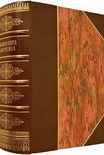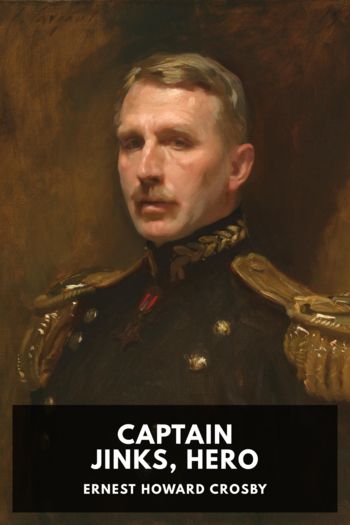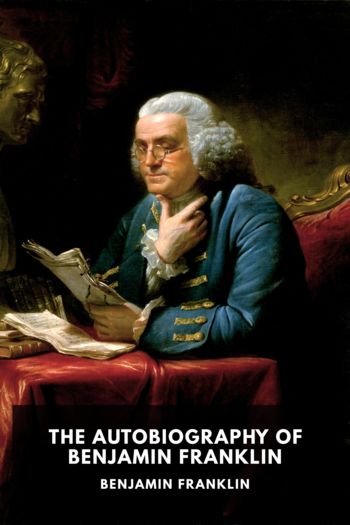I Am What I Am, John Barrowman [smart ebook reader .txt] 📗

- Author: John Barrowman
Book online «I Am What I Am, John Barrowman [smart ebook reader .txt] 📗». Author John Barrowman
In my defence, a while before I made the remark, Top Gear had received a small number of complaints following Jeremy Clarkson’s use of the term ‘ginger beer’. However, a London free paper published my comment, which I’d thought was ‘off the record’, and as a result people at the BBC thought that Clarkson and I were having a public fight. I’m not sure that we ever really were, and I’ve consistently remained a fan of the show.
In the summer of 2009, my absence from prime-time car shows was remedied. I was asked to be a guest on Fifth Gear on Five. The programme had heard I was a petrol head beginning my own car collection, and their producers read in a Motor Trend magazine interview that one of my childhood dreams was to race a rally car, and that as an adult I’d like to buy my own some day and drive in off-road rally races. It seemed the perfect fit. And, I have to say, although I ended up destroying a £120,000 rally car in a death-defying crash on the show (and my mum yelled at me for days about my risk-taking1), it was a truly brilliant experience.
My spectacular crash on Fifth Gear was, unfortunately, not my only crash of this summer – but my quick responses and fast thinking during a car accident in Bridgend proved to me that driving off-road might be a sport at which I’d excel. After all, it was in my genes. Driving off-road (and into snow banks and under snowploughs) were driving skills we practised as a family when we first moved to America.
In the early eighties, after our first few years in the US, our neighbours had a name for the Barrowmans.2 We were labelled the family with the disposable cars because the drivers in the house at that time – my parents, Carole and Andrew – wrecked seven cars in a short period of time.
In their defence, not all of the accidents were the fault of their skills or lack thereof. During the first year that we lived in Prestbury, Illinois, my mum was driving her VW Rabbit on Hankes Road, the road that led into our neighbourhood, after a light snowfall, with my gran, Murn, sitting in her favourite seat in the car: the back seat. (Murn also liked travelling backwards in the extra seat at the very back of a Volvo station wagon we once owned. She and I would often ride back there when we took trips. Together we would wave,3 pull silly faces and pick our noses at anyone who got less than two chevrons behind us.)
That wintry day, my mum’s car skidded at a turn, the wheels caught on the lip of the road, the car flipped … and crashed down on its wheels in a nearby field. No one was hurt, but poor Murn was pinned in place, essentially caught in the space behind the seats, until my mum freed herself and then manoeuvred Murn out of her seatbelt.4 When I came home in the school bus that day, I recognized my mum’s car in the field, which sent me into a panic until I got home and saw my mum sitting safely on the couch – albeit sipping whisky rather than her usual sherry.
The family car at that time was a Caprice Classic with rear-wheel drive, and for many winters after that accident, the car had big bags of salt weighing down its rear to stop it fishtailing on the ice or snow. Driving in the Midwest, where winters sometimes brought 8–12 inches of snow in one storm a couple of times a month, meant that learning how to drive out of an icy skid and how to avoid sliding into ditches were must-have skills. I still pride myself on them to this day.
A few weeks after my mum’s accident, Carole was waiting at the corner of Hankes Road for a city snowplough to pass – when the massive machine turned left and directly into her car. The plough’s blade scraped up across the hood and kept coming. Carole was so stunned that this was actually happening, it took her a few beats to register that the blade was moving closer to the windshield – and to her head. She decided she’d better get the hell out of there.5 She clambered out the passenger side of the car, screaming at the driver, who’d finally stopped, but not before he’d sheared a chunk off the front of the car.
Then it was Andrew and my dad’s turn. Andrew’s car had been sideswiped on the left while he crossed an Aurora intersection on his way home from school. A week or so later, when the car was repaired, my dad went to pick it up. As he pulled out of the body shop’s parking lot, he was blindsided on the right side of the car. After swearing loudly (in Glaswegian) and freaking out the other driver, my dad reversed the car directly back into the repair bay. He climbed out to the stunned looks of the mechanics.
He said, ‘You fixed the wrong side.’
The Barrowmans disposed of seven cars in those first years as American drivers. When my turn came to get my first car, I had learned from the entire family how to drive defensively. In America in the eighties, driver’s education was sponsored by your local high school and so, as soon as I was eligible, I signed up for the driving classes and passed with chequered flags. On the day of my sixteenth birthday, the age when you’re able to get a driver’s licence in the US, I was first in line at the local Department of Motor Vehicles. I passed the road test at my first attempt.
Later that week, my dad took me to Bill Jacobs VW showroom in Joliet. (Despite the fact that the Barrowmans had wrecked a number of VWs in the





Comments (0)